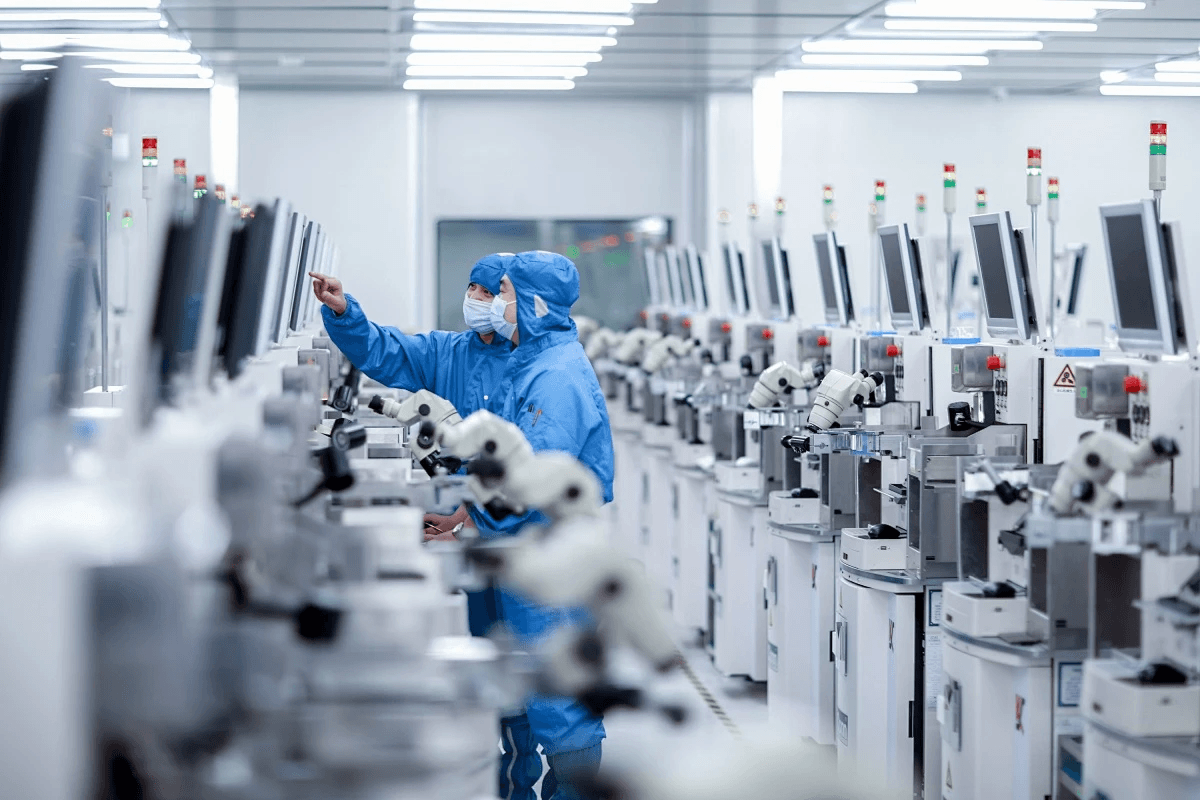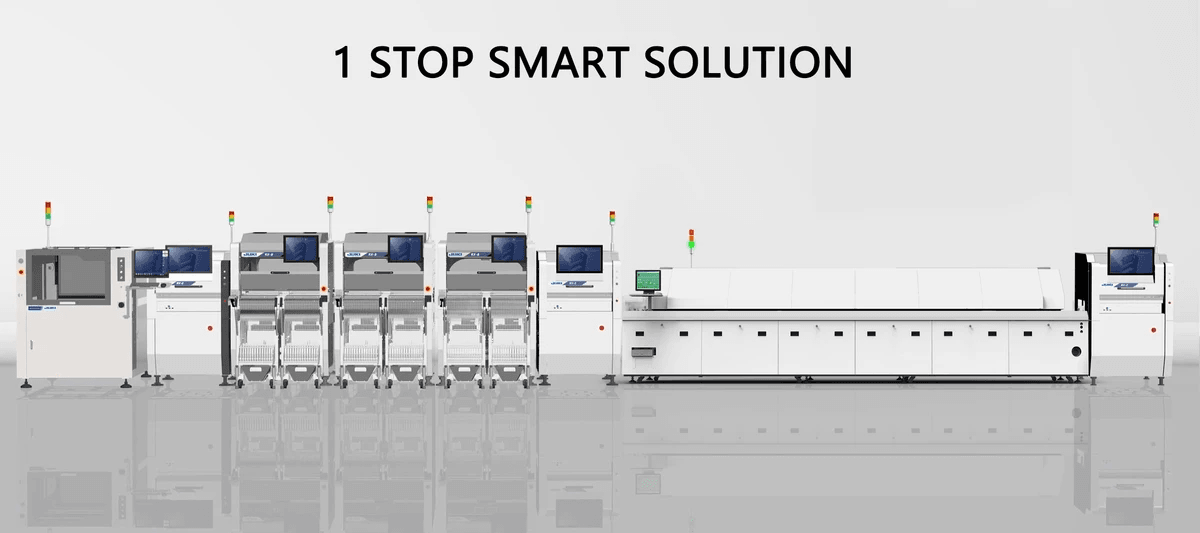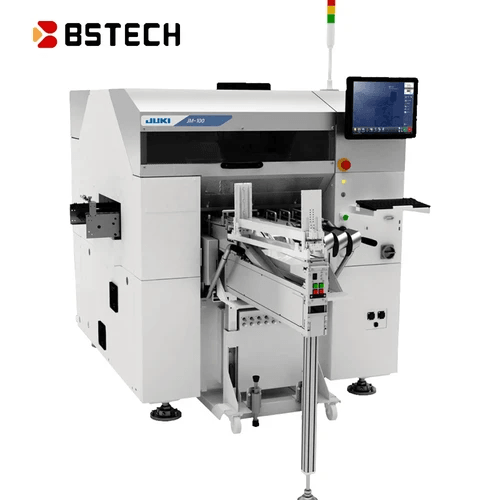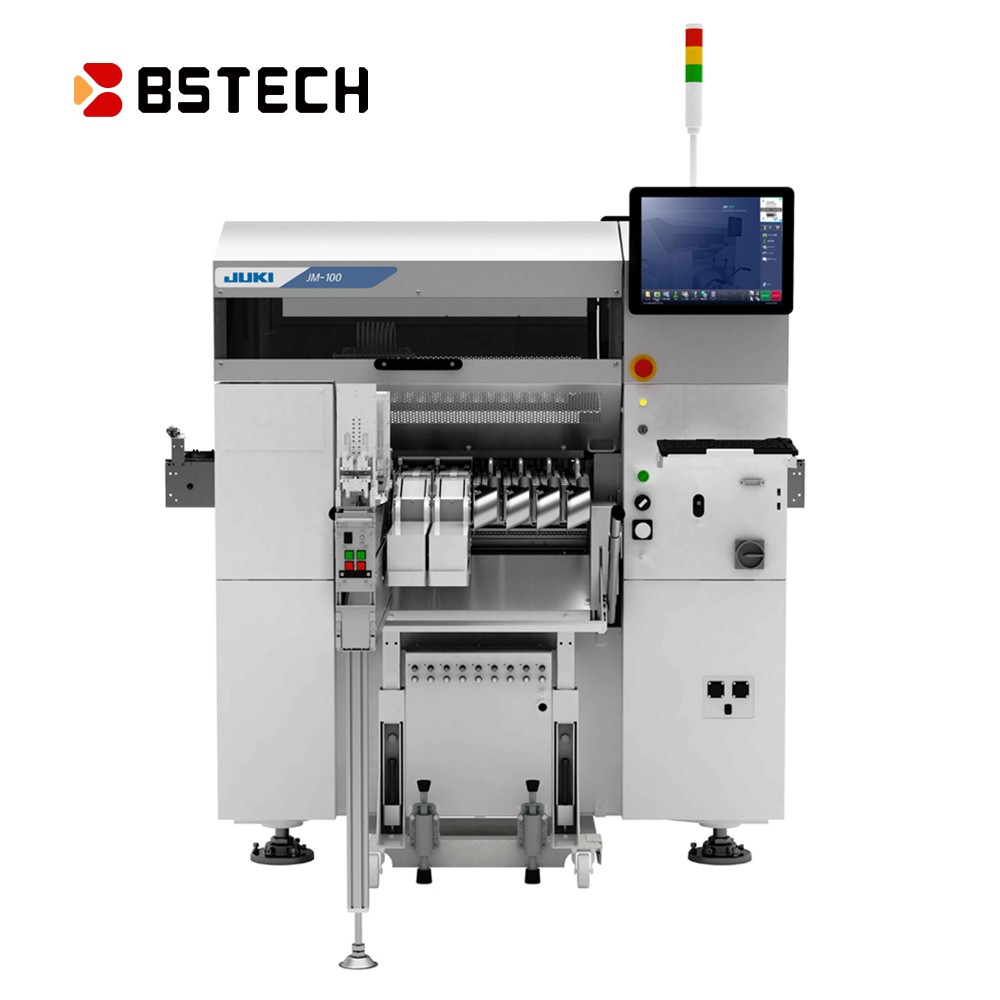Introduction

In the fast-paced world of electronics manufacturing, the significance of Surface Mount Technology (SMT) cannot be overstated. SMT has revolutionized how components are assembled on printed circuit boards, allowing for greater efficiency and compact designs. At the heart of this technology lies the pick and place machine, a crucial tool that automates the placement of electronic components with precision.
Understanding SMT and Its Importance
SMT machines have transformed traditional manufacturing processes by enabling higher production volumes and reducing assembly times. The best pick and place machines are designed to handle various component sizes, from tiny resistors to larger capacitors, making them indispensable in modern electronics production. As industries continue to evolve, understanding SMT's importance is vital for businesses looking to stay competitive.
Key Features of Pick and Place Machines
A pick & place machine boasts several key features that enhance its performance in assembly lines. These machines typically include advanced vision systems for accurate component placement, high-speed operation capabilities, and flexibility to accommodate different board layouts. Investing in a top-tier machine pick and place can significantly improve overall productivity while ensuring quality control.
Common Applications for Picking and Placing
The applications for pick & place machines are vast, spanning industries such as consumer electronics, automotive, telecommunications, and medical devices. From assembling smartphones to intricate circuit boards used in medical equipment, these machines play a vital role in ensuring precise placement of components. As technology continues to advance, the demand for efficient SMT machines will only grow stronger.
Assessing Your Production Needs

When it comes to selecting the best pick and place machine for your production line, understanding your specific needs is crucial. It’s not just about picking a machine; it’s about ensuring that the machine pick and place system aligns seamlessly with your operational goals. By assessing your production needs thoroughly, you can make an informed decision that enhances efficiency and productivity.
Evaluating Production Volume
Production volume is a primary factor in choosing the right pick & place machine for your SMT operations. If you're running high-volume production, investing in a high-speed pick and place machine will likely yield better returns by maximizing throughput. Conversely, for smaller batches or prototyping, a more compact or manual option may suffice without breaking the bank.
In this context, consider how many boards you need to assemble daily or weekly—this will help narrow down your options significantly. The best pick and place machines cater to varying volumes, so knowing where you stand helps avoid over- or under-investing in equipment. Remember, it's not just about speed; it's also about maintaining quality at those volumes.
Determining Component Sizes and Types
The types of components you handle play a significant role in selecting an appropriate SMT machine. Different machines are designed to accommodate various sizes—from tiny SMDs (Surface Mount Devices) to larger components like connectors or sockets. Understanding whether your production primarily involves standard components or specialized parts will guide you toward the best pick and place machine for your needs.
Moreover, some machines excel at handling diverse component types while others are tailored for specific applications—knowing this can save you time during setup and increase overall efficiency. Take into account not just the size but also the weight of components; heavier items may require more robust handling capabilities from your chosen machine pick and place system.
Analyzing Board Complexity
Board complexity is another critical factor when evaluating which SMT machines will suit your operation best. Complex boards often require precision placement capabilities that only certain advanced models can offer effectively—think multi-layered designs with varied component placements! If you're dealing with intricate assemblies featuring numerous different parts, investing in a high-end pick & place machine that offers advanced vision systems might be necessary.
On the flip side, if you're primarily working with simpler boards, you might find that a basic model suffices without unnecessary features driving up costs unnecessarily. Always keep in mind that while complexity can add value to products, it can also complicate assembly processes if not matched with suitable machinery—so choose wisely!
Types of Pick and Place Machines

When diving into the world of pick and place machines, it's essential to understand the various types available. Each machine is designed with specific functionalities that cater to different production needs. This section will explore the nuances between high-speed and precision machines, automatic versus manual options, and the choice between standalone and inline systems.
High-Speed vs. Precision Machines
High-speed pick and place machines are ideal for those who prioritize rapid production rates over intricate placements. These machines can handle large volumes efficiently, making them perfect for mass production environments where time is money. However, if your operation requires meticulous placement of tiny components or complex boards, a precision machine may be the best pick and place machine for you, as it ensures accuracy even at slower speeds.
On the flip side, precision machines excel in applications where component alignment is critical—think fine-pitch devices or sensitive electronics. While they might not match the speed of their high-speed counterparts, their ability to maintain tight tolerances can save you from costly errors down the line. Ultimately, assessing your specific needs will guide you in selecting either a high-speed or precision machine that aligns with your SMT goals.
Fully Automatic vs. Manual Options
The choice between fully automatic and manual pick & place machines boils down to how much control you want over your production process. Fully automatic systems streamline operations by minimizing human intervention; once programmed, they can run continuously with little oversight needed—ideal for businesses looking to scale up without adding labor costs.
Conversely, manual options provide flexibility that fully automated systems lack; operators can adjust settings on-the-fly based on real-time requirements or troubleshoot issues as they arise. For smaller operations or those just starting out in SMT processes, a manual machine might be more accessible while still delivering quality results without breaking the bank.
In essence, whether you opt for a fully automatic system or a manual machine depends on your operational style—do you prefer hands-off efficiency or hands-on adaptability? Both have their merits but understanding how each fits into your workflow is crucial in making an informed decision about which type of pick & place machine suits your needs best.
Choosing Between Standalone and Inline Systems
When it comes to deciding between standalone and inline systems for your SMT processes, consider how each option integrates into your existing setup. Standalone machines offer flexibility; they can be placed anywhere within your production line without requiring extensive modifications to other equipment—perfect for small shops or those testing new designs.
Inline systems are designed to work seamlessly within an automated assembly line environment, allowing components to move directly from one stage of production to another without interruption. These systems typically provide higher throughput rates but may require more upfront investment in infrastructure changes.
Ultimately, choosing between these two types of pick and place machines hinges on how much space you have available and what level of integration you're aiming for in your manufacturing process. Each option has its advantages depending on whether you're looking for versatility with standalone models or efficiency with inline setups.
Leading Brands in the Market

When it comes to selecting the best pick and place machine, knowing the leading brands can make all the difference. Each brand offers unique features, technologies, and innovations that cater to various production needs. In this section, we’ll delve into what makes JUKI, Bensun, and Universal Instruments stand out in the crowded market of SMT machines.
Exploring JUKI's Innovations
JUKI has established itself as a pioneer in the world of pick & place machines with its relentless focus on innovation. Their machines are designed for high-speed operations while maintaining precision—perfect for those looking to optimize their SMT processes. With features like intelligent software that enhances operational efficiency, JUKI’s offerings represent some of the best pick and place machines available today.
Moreover, JUKI integrates advanced vision systems into their machine pick and place solutions, allowing for accurate component placement even on complex boards. This means fewer errors and less waste—a win-win for any production line! As you evaluate your options in SMT machines, consider how JUKI’s innovations can elevate your manufacturing capabilities.
Investment vs. Long-Term Value

When considering a pick and place machine, understanding the balance between initial investment and long-term value is crucial. The best pick and place machines can come with hefty price tags, but their efficiency and reliability often justify the cost over time. Evaluating this investment requires a careful examination of both upfront costs and future benefits.
Initial Costs of Best Pick and Place Machines
The initial costs of acquiring the best pick and place machines can vary significantly based on features, capabilities, and brand reputation. While high-speed models may demand a larger financial outlay, they often deliver superior performance that can enhance your production line's throughput. It's essential to weigh these initial expenses against your specific needs to ensure you're making an informed decision regarding your machine pick and place investment.
Operational Efficiency and Maintenance Costs
Operational efficiency is where the true value of your pick & place machine shines through. A well-chosen SMT machine not only boosts productivity but also minimizes downtime, leading to lower operational costs in the long run. Additionally, maintenance costs should be considered; investing in a reliable machine SMT can save you from frequent repairs that would otherwise eat into your profits.
Resale Value and Upgradability
Resale value is an often-overlooked aspect when purchasing a pick & place machine; however, it plays a significant role in determining overall investment value. High-quality SMT machines tend to retain their worth better than lower-end models, making them more appealing for resale down the line. Furthermore, choosing machines with upgradable features ensures that you can adapt to changing technologies without needing to invest heavily in new equipment frequently.
Support and Service Options

When investing in a pick and place machine, it’s crucial to consider the support and service options available. A robust support system can make all the difference, ensuring that your SMT machines operate smoothly and efficiently. From technical assistance to training programs, these services help maximize your investment in the best pick and place machine.
Importance of Technical Support
Technical support is vital for maintaining peak performance of your machine pick and place. Whether you encounter a minor hiccup or a major malfunction, having access to knowledgeable technicians can save you time and money. The right support ensures that your pick & place machine operates at its best, minimizing downtime and keeping production on track.
Training Programs for Operators
Investing in training programs for operators is essential when introducing new SMT machines into your production line. Well-trained personnel can handle the complexities of operating a pick & place machine with ease, leading to increased efficiency and reduced errors. With proper training, operators will be better equipped to utilize the full capabilities of the best pick and place machines available on the market.
Warranty and Parts Availability
A solid warranty is an important factor when selecting a machine SMT; it provides peace of mind regarding potential repairs or replacements. Additionally, ensuring that parts are readily available helps maintain operational continuity should any issues arise with your pick & place system. The combination of a comprehensive warranty and easy access to replacement parts enhances the long-term value of your investment in an SMT machine.
Conclusion
In the fast-paced world of electronics manufacturing, understanding your SMT needs is crucial for long-term success. Investing in the best pick and place machine can significantly enhance your production capabilities and efficiency. By carefully evaluating your requirements, you can make informed decisions that align with your operational goals.
Making Informed Decisions for SMT Needs
When choosing a pick & place machine, it's essential to consider factors like production volume, component sizes, and board complexity. The best pick and place machines vary in features and capabilities; hence, aligning them with your specific needs is vital for maximizing output. An informed decision not only saves costs but also ensures that you invest in a machine that will serve you well over time.
The Role of Technology in Efficiency
The integration of advanced technology into SMT machines has revolutionized manufacturing processes by enhancing precision and speed. Modern pick & place machines utilize sophisticated algorithms and automation to streamline operations, resulting in increased productivity and reduced error rates. With the right machine pick and place technology, manufacturers can achieve higher efficiency levels while maintaining quality standards.
Future Trends in Pick and Place Machines
Looking ahead, we can expect continued innovation within the realm of pick & place machines as manufacturers strive to keep up with evolving industry demands. Trends such as AI-driven automation, improved software interfaces, and enhanced connectivity options are likely to shape the future landscape of SMT machines. Staying abreast of these trends will help businesses remain competitive while ensuring they have access to the best pick and place machine available.
